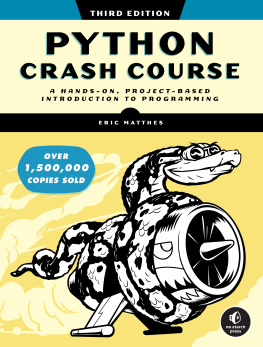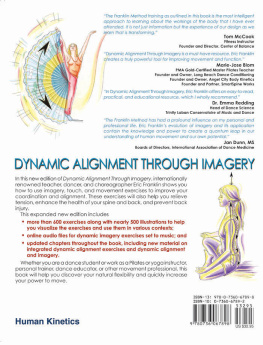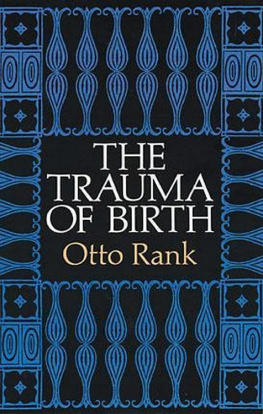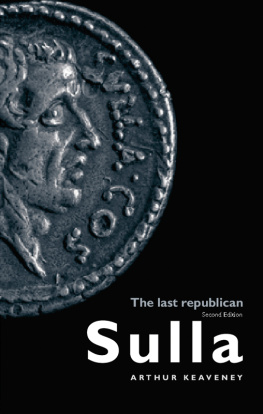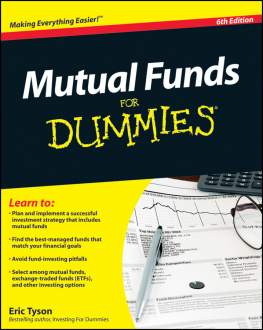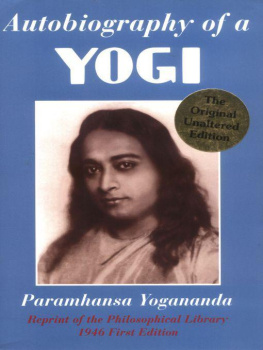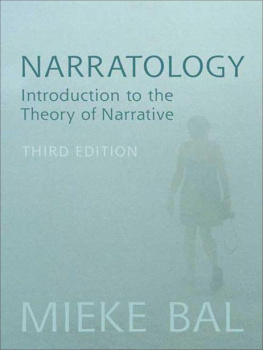Eric Arthur - Toronto: no mean city
Here you can read online Eric Arthur - Toronto: no mean city full text of the book (entire story) in english for free. Download pdf and epub, get meaning, cover and reviews about this ebook. City: Toronto etc, year: 1986;2003, publisher: University of Toronto Press, genre: Romance novel. Description of the work, (preface) as well as reviews are available. Best literature library LitArk.com created for fans of good reading and offers a wide selection of genres:
Romance novel
Science fiction
Adventure
Detective
Science
History
Home and family
Prose
Art
Politics
Computer
Non-fiction
Religion
Business
Children
Humor
Choose a favorite category and find really read worthwhile books. Enjoy immersion in the world of imagination, feel the emotions of the characters or learn something new for yourself, make an fascinating discovery.

- Book:Toronto: no mean city
- Author:
- Publisher:University of Toronto Press
- Genre:
- Year:1986;2003
- City:Toronto etc
- Rating:3 / 5
- Favourites:Add to favourites
- Your mark:
- 60
- 1
- 2
- 3
- 4
- 5
Toronto: no mean city: summary, description and annotation
We offer to read an annotation, description, summary or preface (depends on what the author of the book "Toronto: no mean city" wrote himself). If you haven't found the necessary information about the book — write in the comments, we will try to find it.
This reprint of the third edition, prepared by Stephen Otto, updates Arthurs classic to include information and illustrations uncovered since the appearance of the first edition.
Toronto: no mean city — read online for free the complete book (whole text) full work
Below is the text of the book, divided by pages. System saving the place of the last page read, allows you to conveniently read the book "Toronto: no mean city" online for free, without having to search again every time where you left off. Put a bookmark, and you can go to the page where you finished reading at any time.
Font size:
Interval:
Bookmark:
Toronto, No Mean City
Eric Arthur fell in love with Toronto the first time he saw it. The year was 1923; he was twenty-five years old, newly arrived to teach architecture at the University of Toronto. For the next sixty years he dedicated himself to saving the great buildings of Torontos past. Toronto, No Mean City sounded a clarion call in his crusade. First published in 1964, the book sparked the preservation movement of the 1960s and 1970s and became its bible. The third edition, prepared by Stephen Otto, updated Arthurs classic to include information and illustrations uncovered since the appearance of the first edition.
This reprint includes four new essays. Christopher Hume, architecture critic and urban affairs columnist for the Toronto Star, addresses the changes to the city since the appearance of the third edition in 1986. Architect and heritage preservation activist Catherine Nasmith assesses the current status of the citys heritage preservation movement. Susan Crean, a freelance writer in Toronto, explores Torontos vibrant arts scene. And finally, Mark Kingwell, professor and cultural commentator, reflects on the development of professional and amateur sports in and around town. Readers will delight in these anecdotal accounts of the citys rich architectural heritage.
ERIC ARTHUR was, at his death in 1982, professor emeritus in the School of Architecture, University of Toronto. He was appointed Companion of the Order of Canada in 1968.
STEPHEN A. OTTO has been a director of the Ontario Heritage Foundation and a member of the Toronto Historical Board.
But Paul said, I am a man
which am a Jew of Tarsus,
a city in Cilicia,
a citizen of no mean city. ACTS 21:39
Third Edition
Revised by
STEPHEN A. OTTO
With new essays by Christopher Hume,
Catherine Nasmith, Susan Crean, and Mark Kingwell
ERIC ARTHUR

First edition
University of Toronto Press Incorporated 1964
Reprinted 1964, 1965, 1968
Second edition
University of Toronto Press Incorporated 1974
Reprinted 1978
Third edition
University of Toronto Press Incorporated 1986
Reprinted with new essays 2003
Toronto, No Mean City, Christopher Hume 2003
Build Well, Catherine Nasmith 2003
Le Toronto Imaginaire, Susan Crean 2003
Toronto In Season: 1986 and After, Mark Kingwell 2003
Toronto Buffalo London
Printed in Canada
ISBN 0-8020-5668-7 (cloth)
ISBN 0-8020-6587-2 (paper)

Printed on acid-free paper
National Library of Canada Cataloguing in Publication
Arthur, Eric, 18981982
Toronto, no mean city
Bibliography
Includes index.
ISBN 0-8020-5668-7 (bound) ISBN 0-8020-6587-2 (pbk.)
1. Architecture Ontario Toronto History.
I. Otto, Stephen, A., 1940- II. Title.
NA747.T6A76 1986 720.97!3541 C86-093387-3
University of Toronto Press acknowledges the financial assistance to its publishing program of the Canada Council for the Arts and the Ontario Arts Council.
University of Toronto Press acknowledges the financial support for its publishing activities of the Government of Canada through the Book Publishing Industry Development Program (BPIDP).
Christopher Hume
Like the rest of the world, Toronto is a different place now than it was in 1964 when Eric Arthur published the first edition of his classic book. Back then Toronto was a city of the future, a community whose full greatness still lay well ahead. Now, at the beginning of the twenty-first century, that sense of civic optimism remains with us, but diminished. The road to our brighter tomorrow suddenly seems filled with obstacles, from amalgamation, underfunding, and waterfront redevelopment to homelessness and suburban sprawl.
Despite the increasingly metropolitan nature of Canadian society, however, we have been slow to come to the aid of our cities. Although 80 per cent of us now live in urban centres, our peculiar political and legislative history has left Canadian cities unable to deal with the issues that face them today.
Because of this perhaps, Toronto, No Mean City is more important and relevant than ever. Four decades after its appearance, Arthurs book has become an essential feature on the intellectual landscape of Toronto. It is one of the ways we learn who we are and come to understand fully what it means to be a Torontonian. Arthur also reminds us of what it means to be part of a city, arguably the greatest of all human creations.
Born in New Zealand in 1898, Eric Arthur moved to Canada in 1923. He had completed his studies in England and accepted an offer to teach architecture at the University of Toronto. When Arthur arrived here, the city was in the midst of an immigration boom that saw its population double. Torontos long colonial slumber was drawing to a close and the groundwork for future glory was being laid.
During the twenties, a decade of civic advancement, much of the public infrastructure that is now being dismantled so recklessly was put in place. The Toronto Transit Commission, for example, was established in 1921, but even before that Ontario Hydro had completed its take-over of privately owned electricity companies in Toronto.
The young Arthur soon emerged as a fixture in local architectural circles as well as in the larger community. Perhaps the fact that he came from the generation that started life with horse and buggy and ended it with space travel enabled him to appreciate the importance of both past and present, history and modernity.
More than anything, it may have been the remarkable scope of Arthurs passions that makes him a unique and crucial figure. Toronto, No Mean City is more than an exploration of our history and a lament for our lost architectural heritage, it is also a celebration of what the city might become.
Eric Arthur was there when the citys heritage preservation movement began organizing in the 1930s. And he was there decades later when Viljo Revells extraordinary proposal for Toronto City Hall was chosen through an international design competition. Without Arthur, a champion of contemporary architecture who helped drag the city out of its smug parochialism, that competition would never have been held. Without that competition, the most significant piece of civic architecture in Toronto would never have been built. Who can say how that would have affected this city and its very image of itself?
Taller buildings will be built before the end of the century here and elsewhere in North America, Arthur prophesies in No Mean City, but there will be no comparable or more renowned city hall.
The important thing is not that he was right though he was but that he had such unquestioned confidence in Toronto. More than anything, this assumption of greatness forms the subtext of his book. Arthur was well aware of the failings of his adopted hometown, especially the sometimes stultifying conservatism, even timidity, of its residents. He quotes none other than Charles Dickens, who visited Toronto in 1842 on a lecture tour. For the most part, the great writer liked what he saw, but not entirely. In a letter to a friend, Dickens didnt mince words: The wild and rabid Toryism of Toronto, he complained, is, I speak seriously, appalling. Some things never change! Or so it seems.
But even Toryism has changed; the town presided over by the Family Compact has grown into a multicultural metropolis where more than 130 languages are spoken. Fuelled by waves of post-war immigration, Toronto is a true city of the world.
Next pageFont size:
Interval:
Bookmark:
Similar books «Toronto: no mean city»
Look at similar books to Toronto: no mean city. We have selected literature similar in name and meaning in the hope of providing readers with more options to find new, interesting, not yet read works.
Discussion, reviews of the book Toronto: no mean city and just readers' own opinions. Leave your comments, write what you think about the work, its meaning or the main characters. Specify what exactly you liked and what you didn't like, and why you think so.

